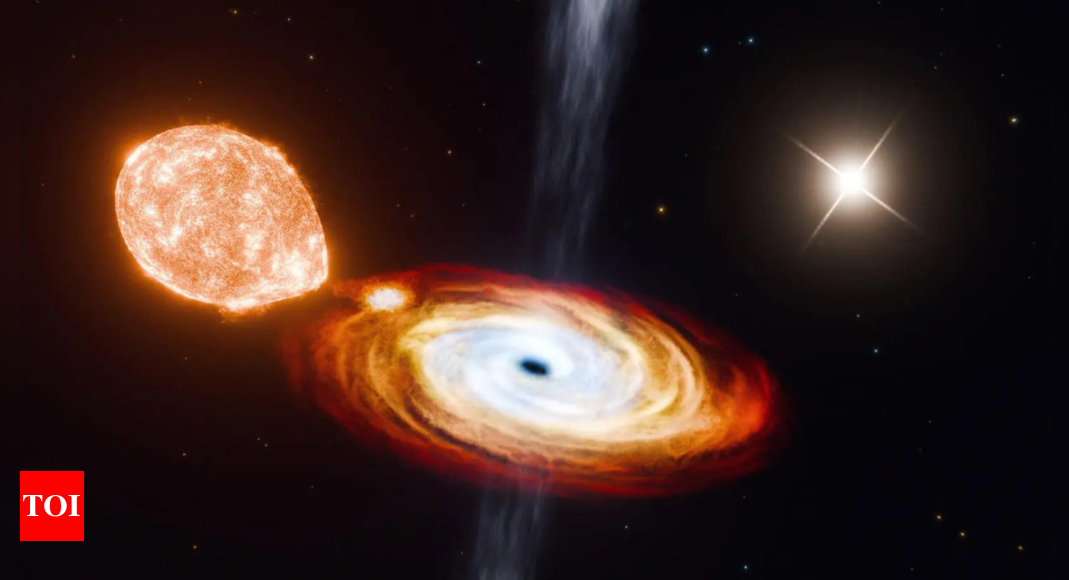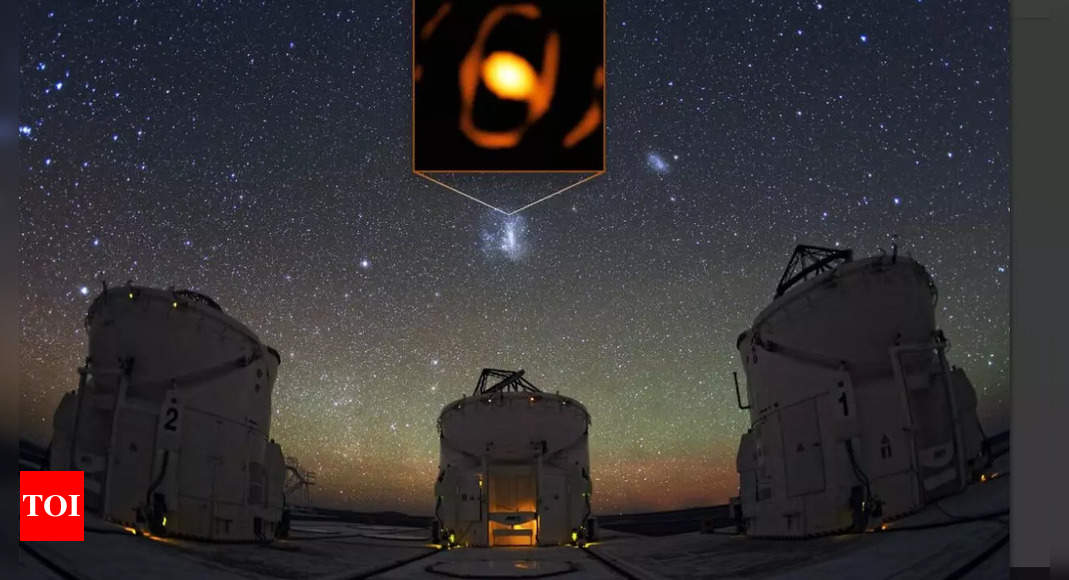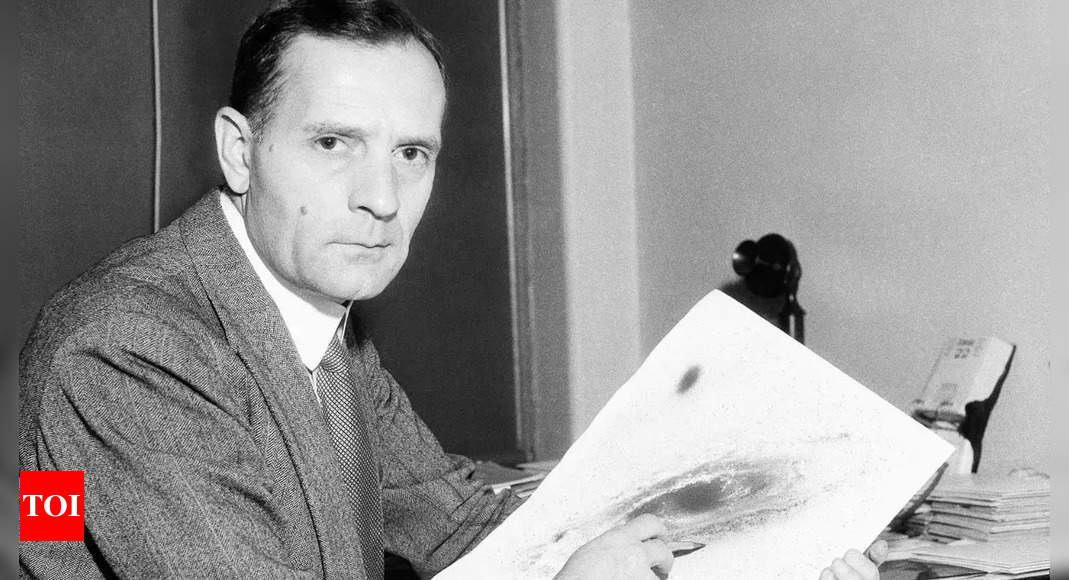
Astronomers traditionally believe black holes form when massive stars explode in supernovas, creating objects so dense that their gravitational force prevents even light from escaping. However, recent evidence suggests some black holes may also form without such explosive events.
Scientists have discovered a black hole that likely formed when a large star’s core collapsed without the typical explosion. This black hole exists in a unique arrangement, gravitationally connected to two regular stars.
While binary systems containing a black hole paired with another star or black hole are known, this discovery represents the first confirmed triple system comprising a black hole and two stars.
Located in the Cygnus constellation approximately 7,800 light-years from Earth, this system features V404 Cygni, a black hole initially thought to have only one stellar companion. Data from the Gaia space observatory revealed its second companion.
The black hole, approximately nine times more massive than our sun, is currently drawing material from its closest companion star, which has 0.7 solar masses and orbits every 6-1/2 days at a distance one-seventh that between Earth and the sun.
This nearby star has expanded into a red giant phase, allowing the black hole to extract its material. A second star, 1.2 times the sun’s mass, orbits the pair every 70,000 years at a distance 3,500 times greater than Earth’s solar distance.
The system’s stability suggests the black hole formed without an explosion, as a supernova would have disrupted the triple arrangement. This supports the “direct collapse” theory, where stars implode after depleting their fuel without an explosive event.









